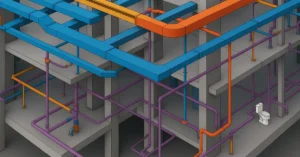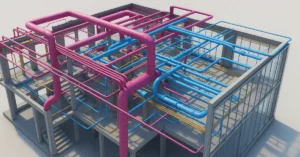Exploring the Frontiers of Space Architecture: Building Beyond Earth in 2024
Space architecture represents a visionary frontier where the principles of architecture converge with the challenges and opportunities of space exploration. As humanity ventures further into space, the need for innovative architectural solutions becomes paramount to sustain life, conduct research, and establish habitats beyond Earth. This article delves into the evolving field of space architecture, exploring current projects, technologies, and future possibilities in 2024 and beyond.
Introduction to Space Architecture
Space architecture encompasses the design, construction, and adaptation of habitats, spacecraft, and infrastructure for human and robotic missions in space. Unlike terrestrial architecture, space architecture must contend with extreme environments, microgravity conditions, radiation exposure, and limited resources, necessitating innovative design solutions and advanced technologies.
Evolution of Space Architecture
1. Early Space Habitats and Modules
Early space missions, such as the International Space Station (ISS), laid the foundation for space architecture. Modular habitats like those on the ISS demonstrated the feasibility of long-duration human habitation in space, fostering international collaboration and technological advancements in life support systems and environmental control.
2. Future Lunar and Martian Habitats
Current initiatives by space agencies and private companies aim to establish sustainable habitats on the Moon and Mars. Projects like NASA’s Artemis program envision lunar bases, while SpaceX’s plans for Mars colonization involve innovative approaches to habitat design and construction using local resources.
Key Challenges in Space Architecture
1. Microgravity Environment
Designing functional habitats in microgravity requires rethinking conventional architectural principles. Space architects must account for fluid dynamics, structural stability, and human factors to ensure safety, comfort, and efficiency in space habitats.
2. Radiation Protection
Space habitats must shield inhabitants from harmful cosmic radiation and solar flares. Innovative materials and shielding technologies are being developed to mitigate radiation exposure and safeguard human health during long-duration space missions.
Technologies Shaping Space Architecture
1. 3D Printing and In-Situ Resource Utilization (ISRU)
3D printing enables on-demand fabrication of structural components using lunar or Martian regolith as raw material. ISRU technologies leverage local resources to minimize payload mass and reduce reliance on Earth for construction materials, paving the way for sustainable space habitats.
2. Advanced Life Support Systems
Closed-loop life support systems recycle water, air, and waste within space habitats, minimizing resource consumption and enhancing mission sustainability. These systems integrate bioregenerative technologies and environmental monitoring to maintain optimal living conditions for astronauts.
Architectural Concepts for Space Habitats
1. Biophilic Design
Biophilic design principles integrate elements of nature into space habitats to enhance psychological well-being and mitigate the psychological challenges of living in isolation. Greenhouses, artificial lighting mimicking natural sunlight, and green spaces simulate Earth-like environments in space.
2. Flexible and Modular Structures
Modular architecture allows for flexibility and adaptability in space habitats, facilitating reconfiguration and expansion as mission requirements evolve. Modular components can be prefabricated on Earth and assembled in orbit or on planetary surfaces, optimizing construction efficiency.
Case Studies: Innovations in Space Architecture
1. Bigelow Expandable Activity Module (BEAM)
The BEAM module, developed by Bigelow Aerospace, demonstrates expandable habitat technology for future space missions. Expandable modules offer increased habitable volume while reducing launch mass, providing scalable solutions for long-duration missions.
2. Lunar Gateway and Mars Habitat Concepts
NASA’s Lunar Gateway will serve as a platform for lunar exploration and a stepping stone for Mars missions. Habitat concepts for the Lunar Gateway and Mars include inflatable habitats, pressurized rovers, and self-sustaining modules designed to support extended astronaut stays and scientific research.
Future Prospects and Exploration Initiatives
1. International Collaboration
International collaboration in space architecture fosters knowledge exchange, resource sharing, and joint development of technologies essential for sustainable space exploration. Partnerships between space agencies, academia, and industry drive innovation and expand humanity’s presence in space.
2. Commercial Space Tourism and Habitats
Advancements in space tourism and commercial spaceflight pave the way for private habitats and space hotels in low Earth orbit and beyond. Commercial ventures aim to democratize access to space and stimulate economic growth while advancing space architecture capabilities.
Conclusion: The Future of Space Architecture
As humanity continues to push the boundaries of space exploration, space architecture will play a crucial role in enabling sustainable human habitation beyond Earth. Innovations in design, technology, and collaborative partnerships are transforming the vision of space architecture from concept to reality, offering new possibilities for scientific discovery, colonization, and the expansion of human civilization into the cosmos.
If you’re interested in learning more about architecture firms in Europe, check out this comprehensive list of the top 50 firms compiled by Archgyan. From innovative startups to long-established industry leaders, this list has it all. Take a look and discover some of the most inspiring and influential architecture firms in Europe today.
If you’re interested in architecture and want to learn more about this amazing field, subscribe to our podcast on youtube
For more SketchUp tutorials, head to https://www.sketchupguru.com










